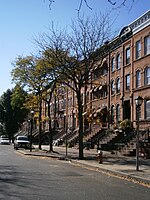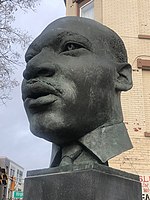Pine Street School New York
2014 establishments in New York CityAC with 0 elementsEducational institutions established in 2014Financial District, ManhattanInternational Baccalaureate schools in New York (state) ... and 7 more
International schools in New York CityInternational schools in the United StatesPreparatory schools in New York CityPrivate elementary schools in ManhattanPrivate middle schools in ManhattanUse American English from August 2018Use mdy dates from August 2018

Pine Street School is a for-profit co-ed international school with an authorized International Baccalaureate Primary Years Programme for ages 2 through 5th grade. The school opened in September 2014 in New York City in the Financial District neighborhood. Pine Street School opened with a dual language immersion program in Spanish and has since added a Mandarin dual language immersion option. Pine Street School is organized in four divisions: the nursery program (2-year-olds), Preschool (ages 3 and 4), and Elementary School (Kindergarten through 5th grade).
Excerpt from the Wikipedia article Pine Street School New York (License: CC BY-SA 3.0, Authors, Images).Pine Street School New York
Wilkinson Avenue, Jersey City
Geographical coordinates (GPS) Address Nearby Places Show on map
Geographical coordinates (GPS)
| Latitude | Longitude |
|---|---|
| N 40.7064 ° | E -74.08 ° |
Address
Wilkinson Avenue 116
07305 Jersey City
New Jersey, United States
Open on Google Maps






